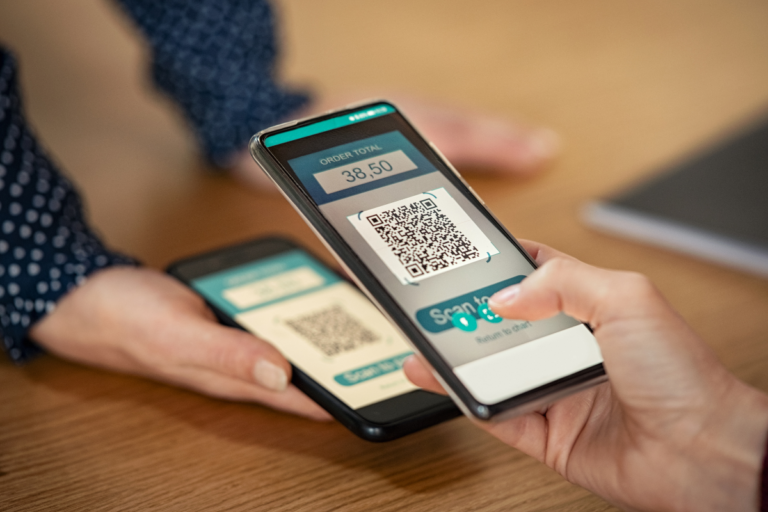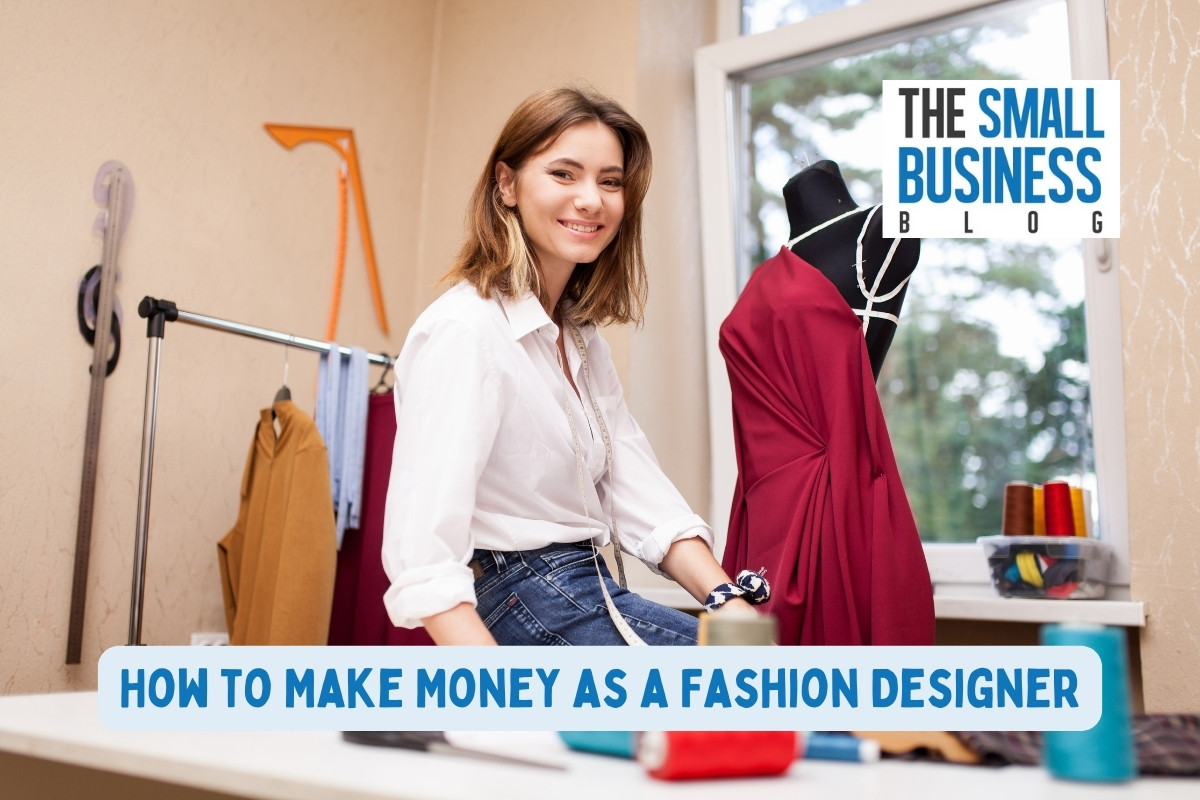The allure of the fashion industry has captivated creative minds for generations.
The opportunity to turn your passion for fashion into a lucrative career is a dream shared by many.
Whether you’re a budding designer or a seasoned fashion enthusiast, this article will guide you through the various methods on how to make money as a fashion designer.
Post Contents
- 1 How to Make Money as a Fashion Designer
- 2 Establishing a Digital Foothold in the Fashion World
- 3 Frequently Asked Questions
- 3.1 Is formal education necessary to become a successful fashion designer?
- 3.2 How can I find manufacturers for my clothing line?
- 3.3 What is the biggest challenge in freelancing as a fashion designer?
- 3.4 How do I stay updated on the latest fashion trends as a designer?
- 3.5 What qualities make a successful fashion consultant or stylist?
- 4 Conclusion
How to Make Money as a Fashion Designer
1. Launching Your Clothing Line

Conceptualizing Your Brand Identity
Creating your clothing line starts with a strong brand identity.
Define your unique style, target audience, and the message you want to convey through your designs.
Think about what sets you apart from the competition.
Designing a Unique Product Line
Your product line should reflect your brand’s identity.
Design clothing that resonates with your target market.
Pay attention to trends, but don’t forget to infuse your creative touch.
Unique designs are more likely to attract a loyal customer base.
Sourcing Materials and Manufacturing
Finding reliable suppliers and manufacturers is crucial.
Research and negotiate with fabric suppliers to ensure quality materials at reasonable prices.
Collaborate with manufacturers who can bring your designs to life efficiently.
Establishing an Online and Offline Presence
An online presence is essential.
Create a professional website and social media profiles to showcase your work.
Additionally, consider participating in local fashion events and pop-up shops to gain offline exposure.
Marketing and Selling Your Creations
Effective marketing strategies are vital.
Utilize social media, email marketing, and collaborations with influencers to reach a wider audience.
Don’t underestimate the power of storytelling; share the inspiration behind your designs to connect with customers on a personal level.
2. Freelance Fashion Design
Building a Portfolio of Your Work
To attract freelance gigs and build a diverse and impressive portfolio.
Include a variety of designs that showcase your skills and versatility.
Your portfolio is your calling card in the freelance world.
Networking in the Fashion Industry
Networking is vital to finding freelance opportunities.
Attend fashion events, join industry-specific groups, and connect with other designers, photographers, and stylists.
Building relationships can lead to referrals and collaborations.
Finding Freelance Gigs and Opportunities
Look for freelance job listings on websites like Upwork, Freelancer, and Fiverr.
Create a compelling profile and bid competitively.
Additionally, consider reaching out to local boutiques or businesses in need of design services.
Pricing Your Services Competitively
Pricing can be challenging for freelancers.
Research industry standards and factor in your skills, experience, and project complexity when setting rates.
Be transparent with clients about your pricing structure.
Maintaining a Consistent Client Base
Consistency is crucial for freelancers.
Deliver high-quality work, meet deadlines, and maintain good communication with clients.
Satisfied clients are more likely to hire you again and recommend your services.
Managing Time and Work-Life Balance
Freelancing offers flexibility, but it also requires discipline.
Create a schedule, set boundaries, and prioritize self-care to avoid burnout.
3. Becoming a Fashion Consultant or Stylist

Defining Your Niche as a Fashion Consultant
Identify your area of expertise within the fashion industry.
Do you excel in personal shopping, wardrobe consulting, or event styling?
Specializing in a niche can help you stand out.
Offering Personalized Styling Services
Tailor your services to meet your client’s specific needs.
Whether revamping their wardrobe or selecting outfits for special occasions, offer personalized styling solutions.
Building a Clientele Through Word-of-Mouth
Satisfied clients can become your best promoters.
Encourage them to spread the word and leave reviews online.
Word-of-mouth recommendations can significantly boost your business.
Utilizing Social Media and Fashion Blogs
Use social media to showcase your styling skills.
Share before-and-after photos, fashion tips, and style inspiration.
Consider starting a fashion blog or YouTube channel to establish yourself as an expert.
Staying Updated on Fashion Trends
Fashion is ever-evolving, so staying updated is essential.
Subscribe to fashion magazines, follow fashion influencers, and attend fashion shows to keep in the loop.
Earnings from Consultations and Personal Shopping
Consultation fees and personal shopping commissions can vary, but they can be lucrative.
Set competitive prices based on your expertise and the level of service you provide.
4. Teaching Fashion Design
Pursuing Formal Education in Fashion
Many successful fashion educators have formal education in the field.
Consider enrolling in a fashion design program to gain comprehensive knowledge and credentials.
Gaining Practical Experience
Before teaching, gain practical experience in the fashion industry.
Work as a designer, stylist, or consultant to build your expertise.
Preparing a Curriculum
Develop a structured curriculum that covers essential aspects of fashion design.
Include hands-on projects and assignments to engage students.
Finding Teaching Opportunities
Look for teaching positions at fashion schools, community colleges, or online platforms.
Networking with industry professionals can also lead to teaching opportunities.
Building a Reputation as an Educator
To excel as an educator, establish yourself as a knowledgeable and supportive teacher.
Encourage students to explore their creativity and provide constructive feedback.
Earnings from Teaching and Mentorship
Teaching fashion design can be financially rewarding.
Salaries vary based on location and institution, but many educators supplement their income through consulting and mentorship.
5. Working for a Fashion House

Preparing a Strong Fashion Design Portfolio
To land a job with a fashion house, you need a stellar portfolio that showcases your design skills.
Include your best work and highlight any relevant experience.
Researching and Applying for Fashion Jobs
Research fashion houses that align with your style and career goals.
Tailor your resume and cover letter to each application.
Attend job fairs and network within the industry.
Interning to Gain Experience
Internships provide invaluable experience and connections in the fashion world.
Be prepared to start at entry-level positions and work your way up.
Climbing the Career Ladder
With dedication and hard work, you can climb the ranks within a fashion house.
Show initiative, take on challenging projects, and continuously improve your skills.
Perks of Working for Established Brands
Working for a fashion house offers stability, exposure, and the chance to collaborate with industry professionals.
Many brands provide employees with benefits such as healthcare and discounts on their products.
Income and Benefits in the Fashion Industry
Salaries in the fashion industry vary widely based on the job, location, and brand.
While entry-level positions may start modestly, experienced design, management, or marketing professionals can earn substantial incomes.
Establishing a Digital Foothold in the Fashion World

In today’s interconnected world, having a robust online presence is paramount for fashion designers looking to make a mark in the industry.
This section explores the multifaceted aspects of building and nurturing your online presence, providing detailed insights into the strategies that can help you gain visibility and credibility.
Creating a Professional Website and Portfolio
Your website serves as your digital storefront, making it essential to create a professional, user-friendly, and visually appealing online platform.
Beyond showcasing your portfolio, a well-designed website can convey your brand’s identity, mission, and values.
Include high-quality images of your designs, detailed descriptions, and contact information.
Consider adding a blog to share your fashion journey, industry insights, and style tips.
Leveraging Social Media for Exposure
Social media platforms have revolutionized the way fashion designers interact with their audience.
Establishing a strong presence on platforms like Instagram, Facebook, Twitter, and Pinterest can amplify your reach.
Post regularly, curate your content to align with your brand, and engage with your followers.
Utilize hashtags to broaden your content’s discoverability, and consider collaborations with fashion influencers to expand your reach.
Engaging with Fashion Communities and Forums
Participating in fashion communities and forums can help you connect with fellow designers, fashion enthusiasts, and potential clients.
Platforms like LinkedIn, Reddit’s fashion subreddits, and specialized fashion forums offer opportunities to discuss industry trends, seek advice, and share your expertise.
Engaging in meaningful conversations can establish your authority in the field and lead to valuable connections.
Frequently Asked Questions
Is formal education necessary to become a successful fashion designer?
While formal education can provide valuable skills and industry insights, it is not an absolute requirement.
Many successful fashion designers have built their careers through practical experience and self-learning.
However, a formal education can open doors and enhance your credibility in the industry.
How can I find manufacturers for my clothing line?
Research and networking are critical.
Attend trade shows, connect with other designers, and use online platforms to locate manufacturers.
Ensure you communicate clearly and understand production costs before committing to a partnership.
What is the biggest challenge in freelancing as a fashion designer?
The main challenge is establishing a steady client base.
It may take time to build a reputation and secure consistent work.
Networking, showcasing your skills, and delivering quality work are essential to overcoming this challenge.
How do I stay updated on the latest fashion trends as a designer?
To stay current, follow fashion magazines, blogs, and social media accounts of fashion influencers.
Attend fashion events, shows, and exhibitions.
Analyze the collections of renowned designers and be open to experimentation.
What qualities make a successful fashion consultant or stylist?
A successful fashion consultant is creative, attentive to detail, and possesses excellent communication skills.
Building trust with clients, understanding their unique style, and offering personalized advice are crucial for success in this field.
Conclusion
The diverse avenues for learning how to make money as a fashion designer offer opportunities for creative expression and financial success.
While each path has challenges, perseverance and dedication are the keys to thriving in the ever-evolving fashion world.
Embrace your creativity, stay informed, and use the methods outlined in this article to achieve your goals in the exciting realm of fashion design.






























